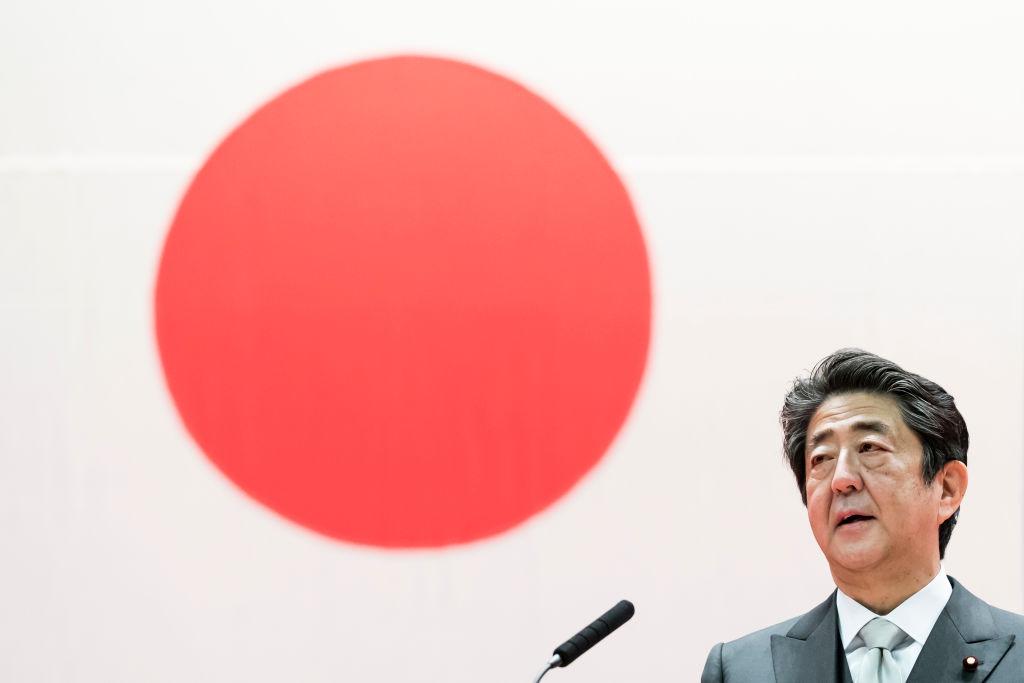Abe leaves top job with Japan a leading light in the Indo-Pacific
Posted By Huong Le Thu and Malcolm Cook on September 9, 2020 @ 06:00

Japanese Prime Minister Shinzo Abe’s announcement that he is standing down for health reasons is worrying many across the Indo-Pacific. The US, Australia and Southeast Asia have grown accustomed to Japan’s stronger and ‘sturdier’ leadership under Abe. In turbulent times, many major powers often disappoint with their leadership styles, but Abe stood out as a pillar of stability and even sanity.
Abe’s eight-year second term as prime minister is a central, positive reason why Japan is the most trusted major power in Southeast Asia. Japan is the first country most Southeast Asian states look to for assistance in navigating between a more aggressive China and an unpredictable America [1]. In the escalating US–China competition, when it comes to Southeast Asia, Japan is the winner.
Abe has been most effective when leading ‘quietly’, yet meaningfully, on issues of shared interest. This was not always the case. Abe’s engagement with Southeast Asia over the past eight years exemplifies the benefits of second chances. In his one-year first term as prime minister in 2006 and 2007, Abe’s approach to foreign policy left many in Southeast Asia uneasy. His desire to make Japan a ‘beautiful [2] country’ again and his patronage of Yasukuni shrine in Tokyo stirred painful memories of Japan’s conduct in Southeast Asia during World War II.
Current deputy PM and former foreign minister Taro Aso’s 2007 vision [3] of a Japan-led ‘arc of freedom and prosperity’ from northern Europe through Southeast Asia to Japan and Taiwan was widely viewed as a campaign to gain Southeast Asian support to encircle China. Any proposal, real or inferred, to collaborate in directly challenging China unifies the diverse states of the region in opposition.
In his second term as prime minister, with a few exceptions [4], Abe has engaged with Southeast Asia more effectively. In 2012–13, despite the difficulties Japanese prime ministers face leaving parliament, Abe visited each of the 10 Southeast Asian states, some more than once.
While the foreign policy beliefs and goals haven’t changed, the second Abe administration has been better than the first at gaining Southeast Asian support for the policies developed to advance them. Japan’s Partnership for Quality Infrastructure [5], which is focused on Southeast Asia and backed by significant concessional financing, presents an attractive alternative to China’s Belt and Road Initiative.
The free and open Indo-Pacific, or FOIP, concept coined by the Abe administration, and promoted also by Australia, India and the US, has had a lukewarm reception in Southeast Asia since the Trump administration adopted it in 2017. But of all the different versions of the Indo-Pacific concept, Southeast Asians align [6] closest with the one championed by Japan [7]. Though marked by comparatively fewer declaratory pronouncements and policy papers, Japan’s FOIP has been the most advanced in terms of action. Released last year, the ASEAN outlook on the Indo-Pacific [8] refers, similarly to Japan’s FOIP, to the UN development goals and building connectivity and prosperity.
Japan remains the key balancing actor in the Mekong subregion where China dominates its smaller neighbours. Japan’s help through bilateral development assistance, multilateral institutions and energy and infrastructure investment is critical for overcoming the subregion’s sustainability challenges.
Under Abe, Japan also has become a champion of free trade. The US and China are engaged in a trade and technology war that undermines the global supply chains that gird Southeast Asian trade. Among Donald Trump’s first decisions as president was to withdraw the US from the Trans-Pacific Partnership, the world’s largest trade deal. Japan has taken the leadership in continuing the TPP after the US withdrawal, now the Comprehensive and Progressive Agreement for Trans-Pacific Partnership. This support was not only greatly appreciated by the Southeast Asian members of the TPP, but also asserted Japan’s leadership globally.
Japan has also advanced its critical role at sea, actively supporting Southeast Asian nations with maritime awareness capacity-building. The Philippines, Vietnam, Malaysia, Indonesia and Brunei have all hosted regular naval visits and training, engaged in exercises and, in some cases, received patrol boats from Japan, all very well received amid mounting challenges in the South China Sea.
All of that has earned Japan solid trust in the region. Surveys have found that Japan is by far the most trusted [1] major power by people in the 10 Southeast Asian countries. Confidence in Japan continues to strengthen, while confidence in both China and the US sharply declines—testimony to the fact that long-term efforts and commitments are needed to earn trust. Abe’s approach to Southeast Asia stands out from more transactional ones favoured by Beijing and Washington.
Abe’s diplomatic acumen is another reason why many in Southeast Asia, and South Asia and Oceania, look up to him. He is among very few global leaders who have dealt with both Xi Jinping and Trump with some success—two relationships that are vital for Japan and are asymmetric and fragile for different reasons.
Abe’s most important legacy may be in the foreign policy arena: he strengthened Japan’s international reputation. Today, Japan is the partner of choice of most countries in the Indo-Pacific, with exception of some of its Northeast Asian neighbours, and has positioned itself as a credible, reliable pole in the evolving multipolar world.
Article printed from The Strategist: https://aspistrategist.ru
URL to article: /abe-leaves-top-job-with-japan-a-leading-light-in-the-indo-pacific/
URLs in this post:
[1] America: https://www.iseas.edu.sg/wp-content/uploads/pdfs/TheStateofSEASurveyReport_2020.pdf
[2] beautiful: https://japan.kantei.go.jp/abespeech/2007/01/26speech_e.html
[3] vision: https://www.mofa.go.jp/policy/pillar/address0703.html
[4] exceptions: https://www.mfa.gov.sg/Newsroom/Press-Statements-Transcripts-and-Photos/2013/12/MFA-Spokesmans-Comments-in-response-to-media-queries-on-Japanese-Prime-Minister-Shinzo-Abes-visit-to
[5] Partnership for Quality Infrastructure: https://www.mofa.go.jp/files/000117998.pdf
[6] Southeast Asians align: https://www.jstor.org/stable/pdf/26924340.pdf
[7] championed by Japan: https://www.mofa.go.jp/files/000407643.pdf
[8] ASEAN outlook on the Indo-Pacific: https://asean.org/asean-outlook-indo-pacific/
Click here to print.